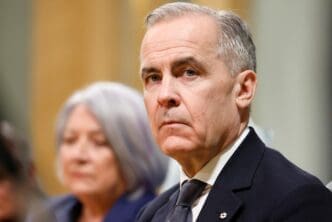The Liberal Party has unveiled a comprehensive and costed platform for the upcoming 2025 federal election, aiming to address the fiscal landscape of Canada. With advance voting already underway and the election day slated for April 28, the platform outlines the party’s financial strategy, including larger projected deficits and $28 billion in unspecified spending cuts over four years to fund its campaign commitments.
Throughout the election campaign, Liberal Leader Mark Carney and other federal party leaders have made significant spending and tax-cut announcements. However, detailed funding plans for these promises were only revealed in the recent release of the platform. The document introduces new spending initiatives while reaffirming several pledges made earlier in the campaign.
The platform’s financial framework begins with a baseline from the Parliamentary Budget Officer released last month, highlighting a decrease in the federal deficit from 1.47% of GDP this fiscal year to 1% in the next. This report did not factor in the economic consequences of ongoing trade disputes with the United States. The December fiscal update from former prime minister Justin Trudeau’s government had aimed to keep the deficit below 1% of GDP by 2026-27, demonstrating fiscal sustainability.
However, Carney’s platform departs from this target, anticipating a deficit of 1.96% of GDP ($62.3 billion) this fiscal year, decreasing to 1.83% of GDP ($59.9 billion) in the following year. The deficit-to-GDP ratio is projected to fall to 1.36% by 2028-29. The platform does not adjust for trade impacts but includes $20 billion in projected revenue from Canadian-imposed countertariffs, intended to support affected workers and businesses.
A notable feature of the Liberal platform is its categorization of spending into operating and capital expenditures. While federal budgets typically do not distinguish spending in this manner, Carney’s approach draws inspiration from countries such as the United Kingdom. This method aims to emphasize capital spending that supports long-term investments. According to the platform, there will be a $9.2 billion deficit in operating spending for the current fiscal year, which is expected to turn into a small surplus by 2028-29.
The adoption of this new approach will not alter Canada’s public accounts’ construction or deviate from generally accepted accounting principles. Instead, it seeks to offer a transparent categorization of expenditures contributing to capital formation in the country.








